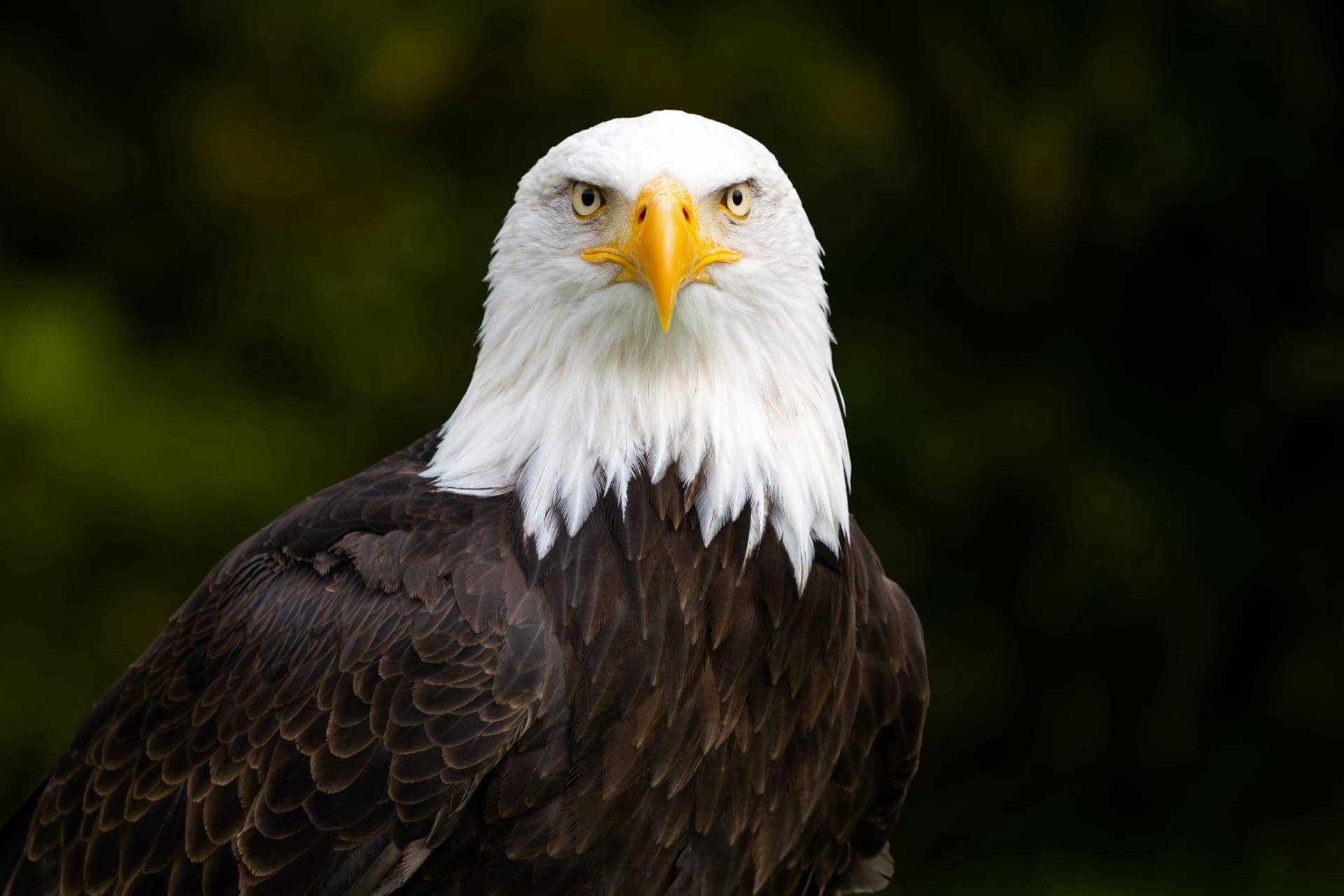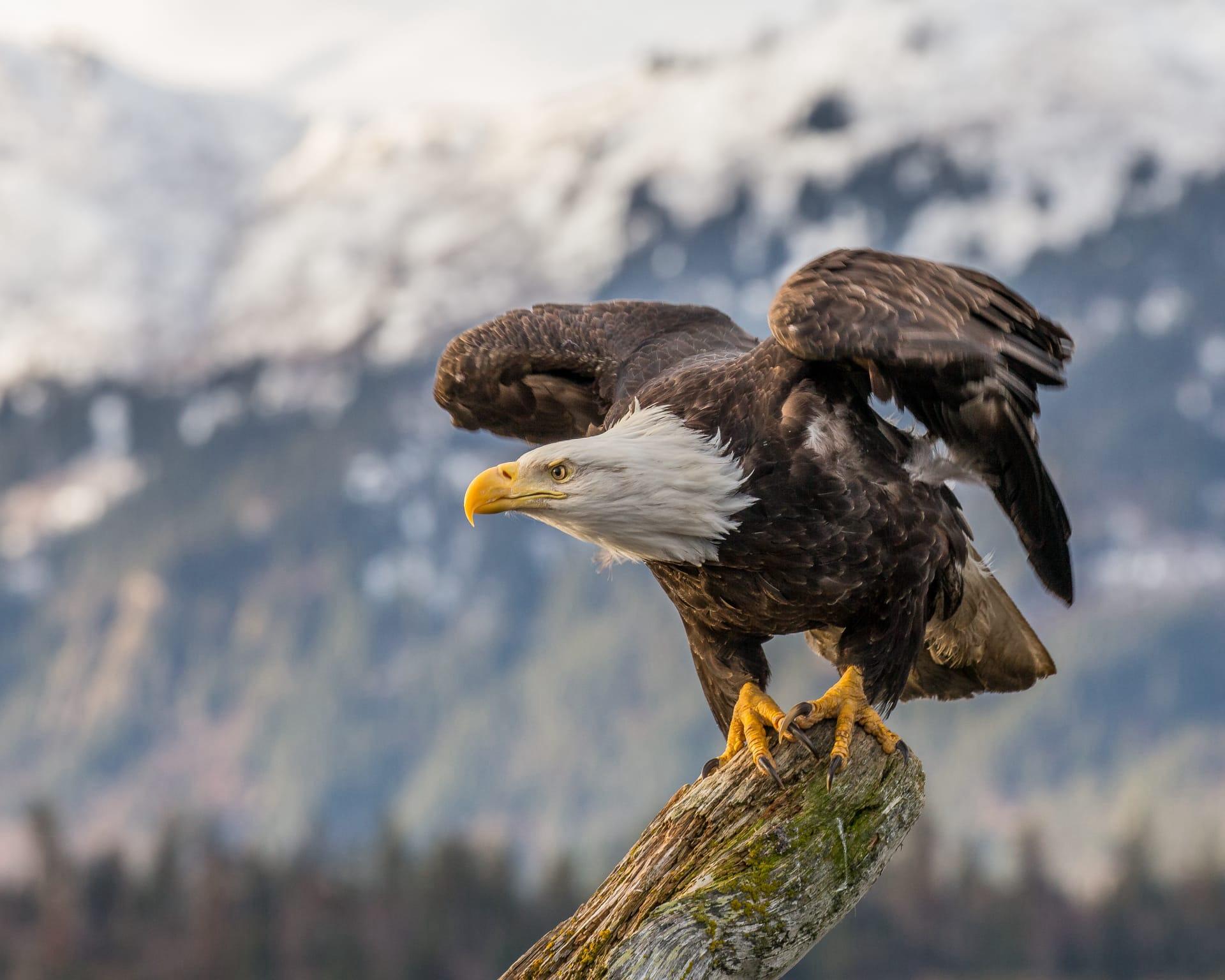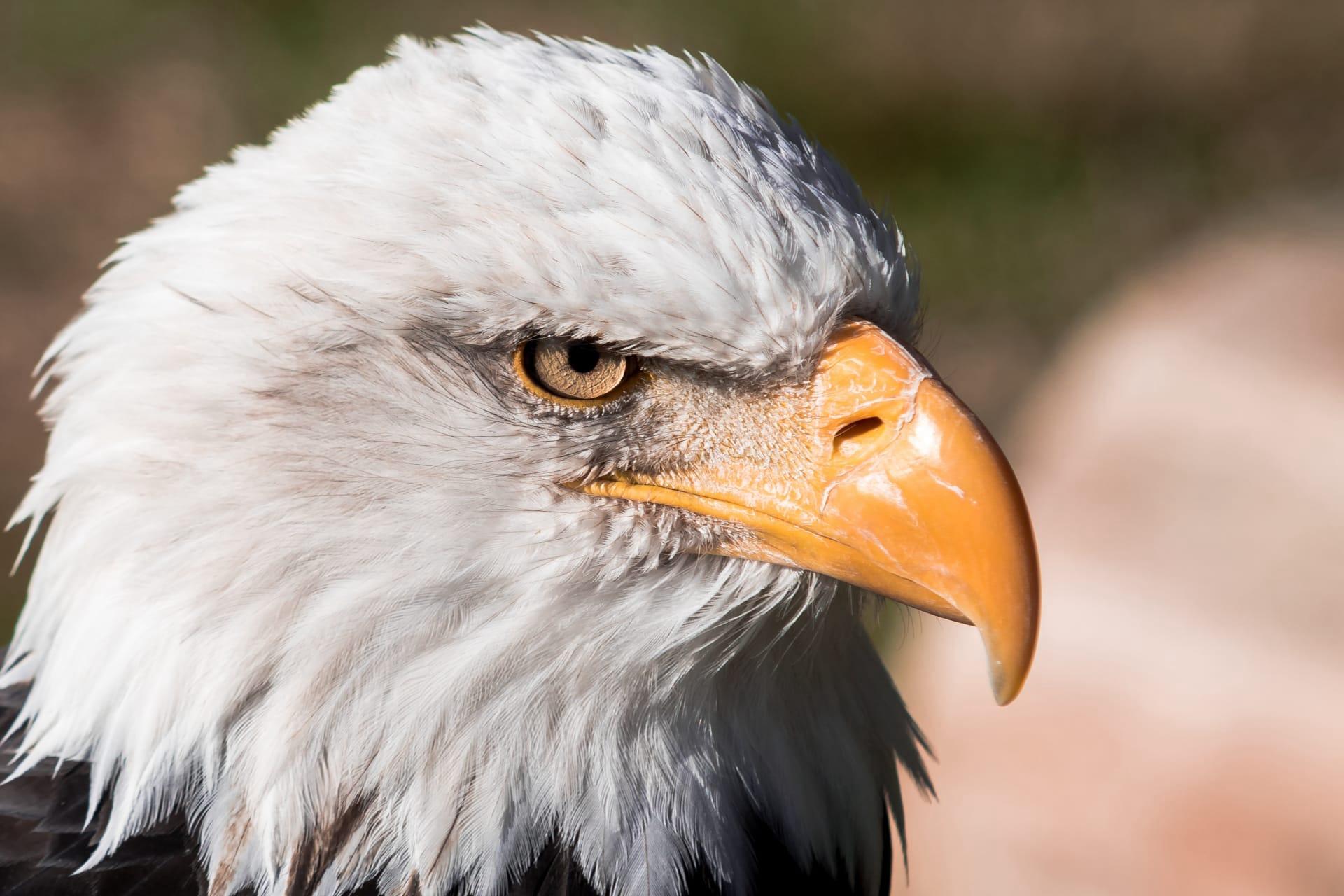Bald Eagle
- Home /
- Mini Encyclopedia /
- Animal /
- Bald Eagle
1
The Bald Eagle, scientifically named Haliaeetus leucocephalus, belongs to the Accipitridae family. This majestic bird of prey is easily recognized by its white head and tail, contrasting with its dark brown body and wings. Adult Bald Eagles have a wingspan ranging from 6 to 8 feet, making them one of the largest raptors in North America. They reach maturity at around 4-5 years old, at which time they develop their iconic white plumage. Juvenile Bald Eagles are a mix of brown and white and lack the adult's distinctive white head and tail.
Bald Eagles are native to North America, with their habitat stretching from Alaska and Canada all the way to northern Mexico. They are most commonly found near large bodies of open water with abundant food supplies and old-growth trees for nesting. In the United States, they are primarily concentrated along the coasts, but they can also be found near lakes, rivers, and wetlands. The population of Bald Eagles has been on the rise, thanks to conservation efforts, reaching over 300,000 in North America.

2
Question: Do Bald Eagles really bald?
Answer: The term "bald" in Bald Eagle is a common misconception. The name actually derives from an older meaning of the word 'bald', which once meant "white-headed". Their distinctive white head and tail feathers, which they develop as adults, contrast sharply with their chocolate-brown body and wings, creating a "bald" appearance. Juvenile Bald Eagles, in contrast, have mottled brown and white plumage, and do not acquire the adult's distinct coloration until they are around four to five years old.

3
Bald Eagles have adapted various survival strategies to thrive in their environment. They are opportunistic feeders, primarily eating fish, which they snatch from the water with their sharp talons. Their excellent vision, four to eight times stronger than that of a human, helps them spot prey from great distances. In addition to fish, they feed on birds, reptiles, amphibians, and small mammals. Bald Eagles are also known to scavenge or steal food from other birds, demonstrating their adaptability in food sourcing.
In terms of nesting, Bald Eagles are loyal both to their partners and their nesting sites. Pairs are monogamous and often mate for life. They build large nests, or aeries, in tall trees or on cliffs near water sources. These nests are reused and added to each year, becoming massive structures that can weigh as much as a ton. Bald Eagles play a key role in their ecosystem, not only as top predators but also as indicators of environmental health due to their sensitivity to pollution and habitat destruction.

4
In the ecosystem, Bald Eagles hold a crucial position as apex predators. Their role at the top of the food chain helps maintain the balance of species populations below them. By preying on fish and other small animals, they help control these populations, which can become overabundant and disrupt the ecosystem's equilibrium. Bald Eagles are also scavengers, which aids in the ecosystem's cleanup and nutrient cycling.
Bald Eagles also serve as important ecological indicators. Their health and population trends can reflect the overall health of the ecosystem they inhabit. For instance, the decline in Bald Eagle populations due to DDT pollution in the mid-20th century signaled broader environmental issues. Their subsequent recovery following the ban of DDT highlights the importance of environmental regulations and conservation efforts in preserving wildlife and ecosystems.

5
Film: "The Eagle's View" is a captivating documentary from the United States, released in 2019. It offers an intimate look at the life of Bald Eagles, showcasing their daily activities, hunting strategies, and the challenges they face in the wild. The film beautifully captures the majestic landscapes of North America, where these eagles soar and thrive. It also emphasizes the importance of conservation efforts in protecting these magnificent birds.
Book: "Eagles of North America" by David Hancock, published in the United States in 2021, is a comprehensive guide to Bald Eagles. Hancock, an acclaimed ornithologist, delves into the biology, behavior, and habitat of these birds, complemented by stunning photographs. He also discusses the conservation success story of the Bald Eagle, offering insights into the efforts that helped their populations rebound.
Book: "Wings of Majesty: The Bald Eagle's Journey" is another significant work, authored by Sarah Benson and published in Canada in 2023. Benson explores the migration patterns, breeding habits, and survival challenges of Bald Eagles. The book is filled with personal anecdotes from her fieldwork, alongside scientific data, making it both informative and engaging. Benson's narrative underscores the Bald Eagle's symbolism of freedom and strength in North American culture.